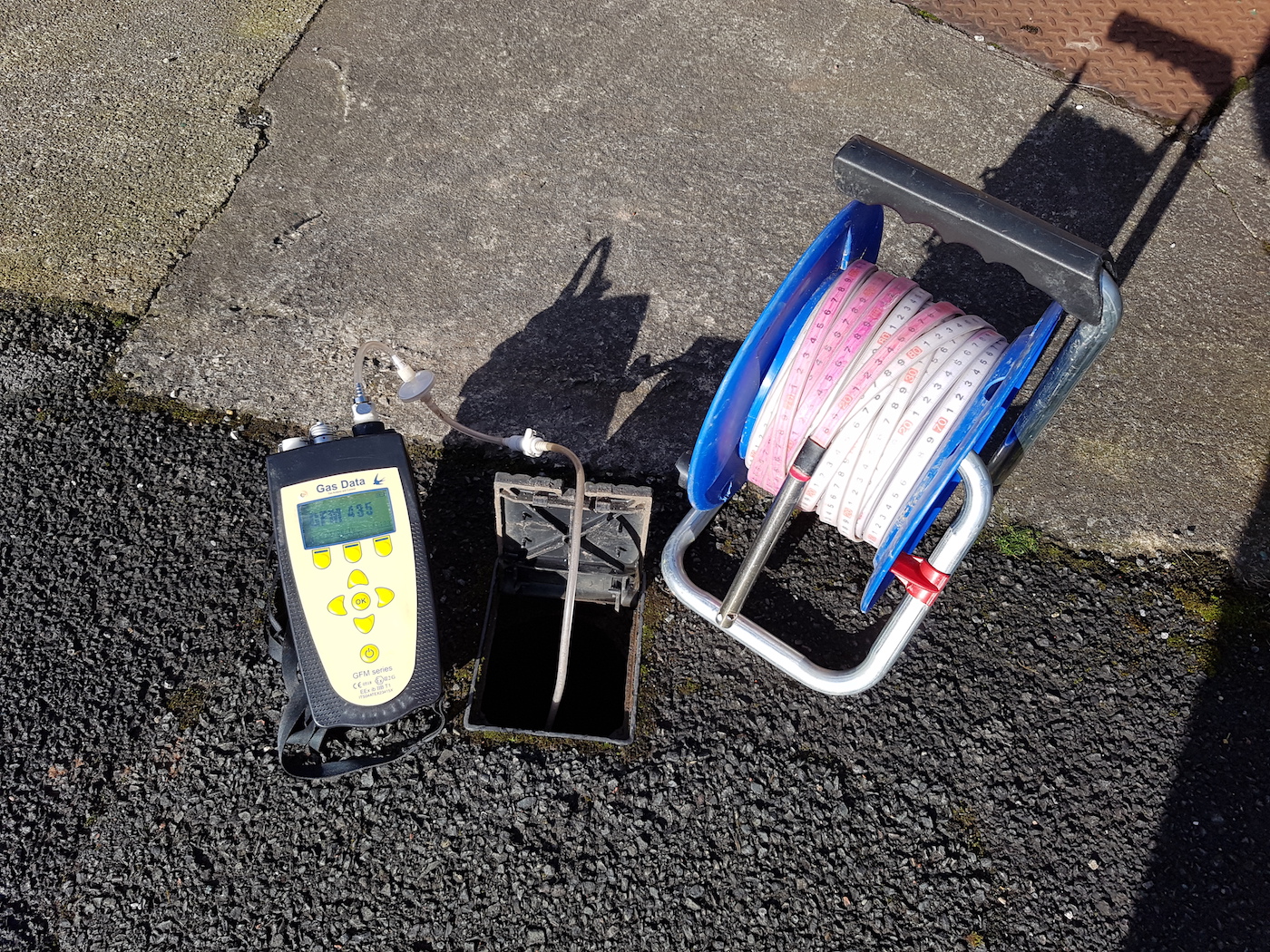
Landfill gas and natural ground gases can migrate into buildings or confined spaces and accumulate to asphyxiating, toxic and explosive concentrations, and therefore the risk should be considered for any development.
A variety of gases might be present in the ground naturally, such as from coal measures and peat deposits, or as a result of contaminated ground such as from landfill sites, infilled ground and spilled or leaked petroleum hydrocarbons.
If within the Desk Study Report, the Conceptual Ground Model shows there are potential sources of ground gases on or nearby the site, then Landfill Gas Monitoring and a ground gas risk assessment will be required.
Standpipe Installation and Landfill Gas Monitoring
We generally install and monitor Landfill Gas standpipes as part of the Site Investigation and unless agreed with the Local Authority, a minimum of three gas monitoring standpipes should be installed (dependant on the size of the site) and monitored every two weeks for a minimum of six visits. Monitoring of each standpipe will include:
- Methane (%)
- Carbon Dioxide (%)
- Oxygen (%)
- Gas Flow Rate (l/hr)
- Atmospheric Pressure (mbar)
- Groundwater Level (m)
On request, monitoring of Hydrogen Sulphide and Carbon Monoxide may be included and if methane is present, we offer gas sampling and analysis using Tedlar bags or Gresham tubes.
When the Gas Monitoring is complete, a Ground Gas Risk Assessment will determine whether gas protection measure will be necessary according to the BS 8485:2015 Code of practice for the design protective measures for methane and carbon dioxide ground gases for new buildings, and CIRIA Reports 130, 149, 665.
Whom to Contact
If you would like a quote for Landfill Gas Monitoring individually or as part of a full Site Investigation or have any questions, please do don’t hesitate to call your Regional Sub Surface Office.

